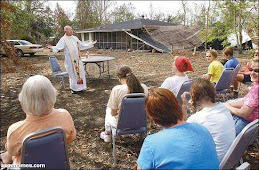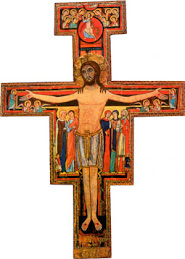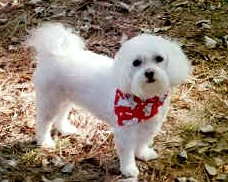By Kennedy Hickman
Christmas Truce - Conflict: The 1914 Christmas Truce occurred during the first year of World War I (1914-1918).
Christmas Truce - Date: Occurring on December 24-25, 1914, Christmas Eve and Day, the Christmas Truce saw a temporary halt to the fighting on parts of the Western Front. In some areas, the truce lasted until New Year's Day.
The Christmas Truce - Peace on the Front: One of the mythic events of World War I, the 1914 Christmas Truce began on Christmas Eve along the British and German lines around Ypres, Belgium. While it took hold in some areas manned by the French and Belgians, it was not as widespread as these nations viewed the Germans as invaders. Along the 27 miles of front manned by the British Expeditionary Force, Christmas Eve 1914 began as a normal day with firing on both sides. While in some areas firing began to slacken through the afternoon, in others it continued at its regular pace.
This impulse to celebrate the holiday season amid the landscape of war has been traced to several theories. Among these was the fact that the war was only four months old and the level of animosity between the ranks was not as high as it would be later in the war. This was complimented by sense of shared discomfort as the early trenches lacked amenities and were prone to flooding. Also, the landscape, aside from the newly dug trenches, still appeared relatively normal, with fields and intact villages all of which contributed to introducing a degree of civilization to the proceedings.
Private Mullard of the London Rifle Brigade wrote home, "we heard a band in the German trenches, but our artillery spoilt the effect by dropping a couple of shells right in the centre of them." Despite this, Mullard was surprised at sunset to see, "trees stuck on top of the [German] trenches, lit up with candles, and all of the men sitting on top of the trenches. So of course we got out of ours and passed a few remarks, inviting each other to come over and have a drink and a smoke, but we did not like to trust each other at first (Weintraub, 76)."
The initial force behind the Christmas Truce came from the Germans. In most cases, this began with the singing of carols and the appearance of Christmas trees along the trenches. Curious, Allied troops, who had been inundated with propaganda depicting the Germans as barbarians, began to join in the singing which led to both sides reaching out to communicate. From these first hesitant contacts informal ceasefires were arranged between units. As the lines in many places were only 30-70 yards apart, some fraternization between individuals had taken place prior to Christmas, but never on a large scale.
For the most part, both sides returned to their trenches later on Christmas Eve. The following morning, Christmas was celebrated in full, with men visiting across the lines and gifts of food and tobacco being exchanged. In several places, games of soccer were organized, though these tended to be mass "kick abouts" rather than formal matches. Private Ernie Williams of the 6th Cheshires reported, "I should think there were about a couple of hundred taking part...There was no sort of ill-will between us (Weintraub, 81)." Amid the music and sports, both sides frequently joined together for large Christmas dinners.
While the lower ranks were celebrating in the trenches, the high commands were both livid and concerned. General Sir John French, commanding the BEF, issued stern orders against fraternizing with the enemy. For the Germans, whose army possessed a long history of intense discipline, the outbreak of popular will among their soldiery was cause for worry and most stories of the truce were suppressed back in Germany. Though a hard line was taken officially, many generals took a relaxed approach seeing the truce as an opportunity to improve and re-supply their trenches, as well as scout out the enemy's position.
The Christmas Truce - Back to Fighting: For the most part, the Christmas Truce only lasted for Christmas Eve and Day, though in some areas it was extended through Boxing Day and New Year's. As it ended, both sides decided on signals for the recommencement of hostilities. Reluctantly returning to war, the bonds forged at Christmas slowly eroded as units rotated out and the fighting became more ferocious. The truce had largely worked due to a mutual feeling that the war would be decided at another place and time, mostly likely by someone else. As the war went on, the events of Christmas 1914 became increasing surreal to those who had not been there.
SOURCE: The Christmas Truce
SEE ALSO: Snopes


















No comments:
Post a Comment